Aquatic moss can be an incredible addition to any freshwater aquarium. Oftentimes one of the first aquatic plants recommended for beginners, mosses help oxygenate the aquarium and provide a great hiding place for any small fish or invertebrates. They also add a nice touch of green to any tank, and are one of the most common editions to my planted aquariums.
Aquatic moss is loved by many aquarists due to its low maintenance requirements and overall versatility within the aquarium. Many mosses have easy care requirements and only require low lighting to grow and survive. Additionally, they can be utilized in the foreground of your tank or affixed to a hardscape feature such as rocks or driftwood.
In this article, we’ll cover some of the best aquatic mosses for you to consider adding to your planted tank. We’ll also briefly touch on the care requirements for each species.
Aquatic Moss Care Guidelines
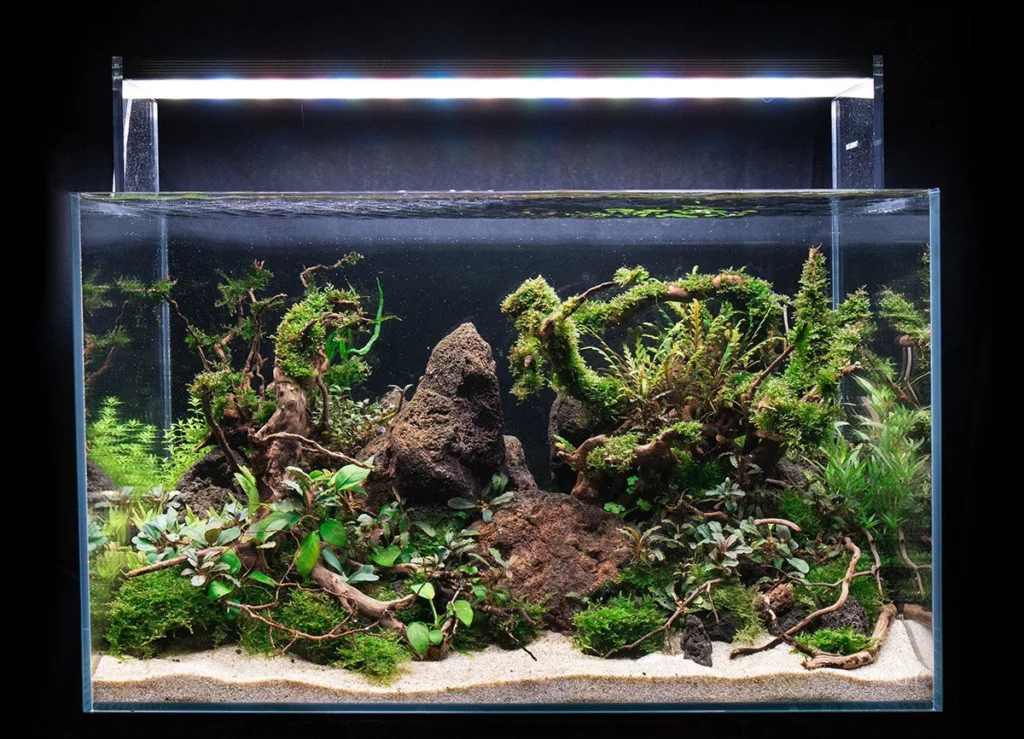
Lighting:
- Low to Moderate Light:
- Most aquatic mosses, including Java Moss and Taiwan Moss, thrive in low to moderate light conditions.
- Avoid intense lighting to prevent algae overgrowth and browning of the moss.
- Adjustable Lighting Period:
- Maintain a lighting period of 8-10 hours per day.
- Experiment with the duration and intensity to find the optimal balance for your specific moss species.
Planting:
- Attach to Substrate or Hardscape:
- Attach moss to rocks, driftwood, or other hardscape elements using fishing line or cotton thread.
- For carpeting effects, spread moss thinly and tie it down to the substrate with mesh or a flat object.
- Avoid Planting Too Deep:
- Plant mosses shallowly to ensure they receive sufficient light.
- Excessive substrate covering may lead to poor growth and browning of the moss.
Water Parameters:
- Adaptable pH Range:
- Most aquatic mosses can tolerate a broad pH range, but aim for slightly acidic to neutral conditions (pH 6.0-7.0).
- Temperature Range:
- Maintain a temperature between 20-28°C (68-82°F) for optimal growth of common moss species.
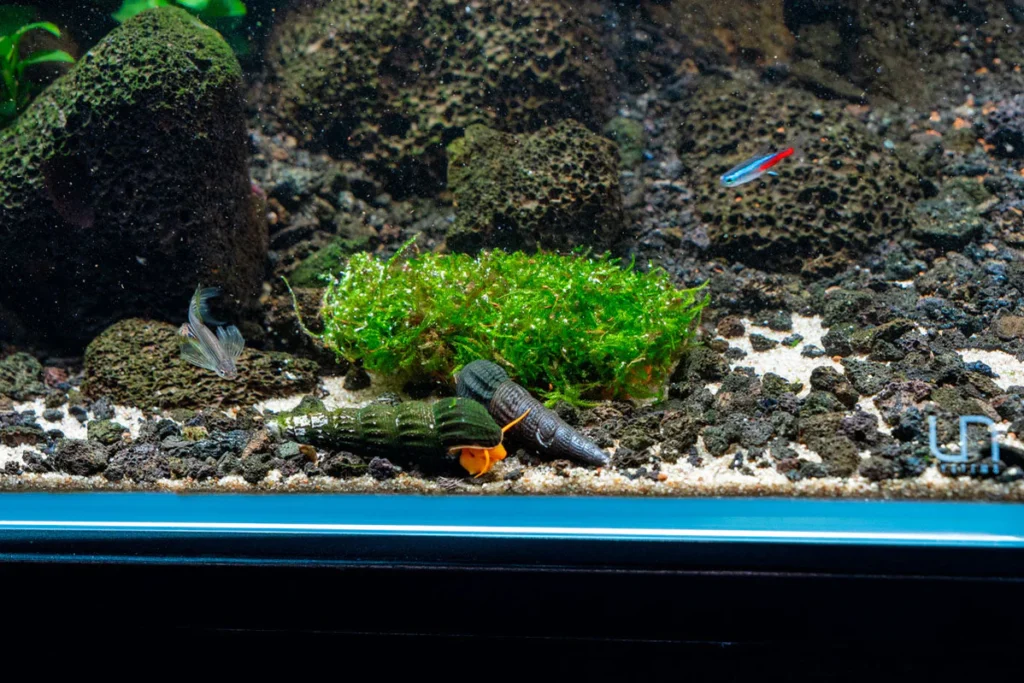
Maintenance:
- Trimming and Pruning:
- Regularly trim moss to maintain its desired shape and prevent it from becoming too dense.
- Remove any yellowing or damaged portions to encourage healthy growth.
- Water Flow:
- Ensure moderate water flow to prevent debris accumulation on the moss.
- Gentle water circulation helps distribute nutrients and oxygen to the moss.
Aquatic Moss Tips:
- CO2 Injection:
- CO2 supplementation can enhance moss growth, especially in setups with higher lighting and demanding plants.
- Avoid Overfertilization:
- Mosses are generally low-maintenance and may not require extensive fertilization. Use a balanced, diluted liquid fertilizer sparingly.
- Quarantine New Additions:
- Quarantine new moss additions to prevent the introduction of potential pests or algae.
Java Moss
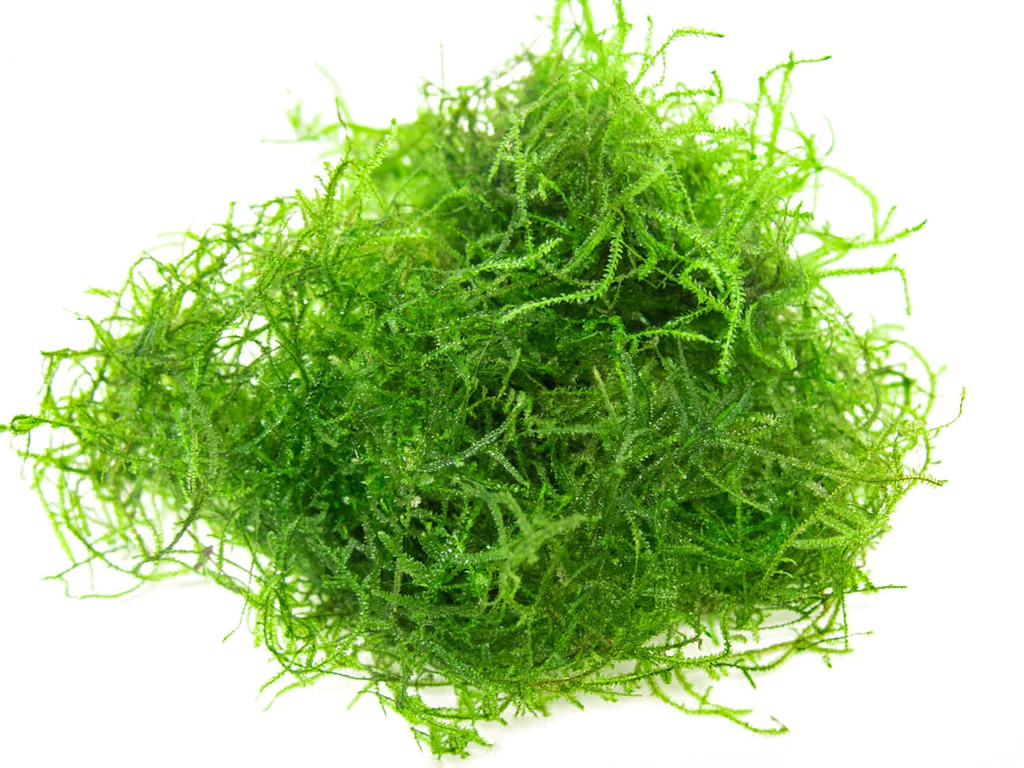
- pH: Wide range, adapts well to various pH levels.
- Temperature: 18-26°C (64-79°F).
- Lighting: Low to moderate light.
- Difficulty of Care: Easy.
Java Moss (Taxiphyllum barbieri) is the most popular and widely available aquatic moss species. It is a hardy and adaptable plant that can thrive in a variety of water conditions, making it one of the best aquatic plants for beginners. It’s rare to not be able to keep Java Moss alive, as it can thrive even in near complete darkness.
Java Moss can be attached to rocks, driftwood, or other surfaces, creating a lush carpet-like effect in the aquarium. You don’t have to worry about planting Java Moss, and can allow it to float freely as it feeds it’s nutrients directly from the water column. It provides a perfect hiding place for small fish and shrimp, and its dense growth also helps to improve water quality by absorbing excess nutrients. Be prepared to trim your Java Moss, as it has a very fast growth rate.
Christmas Moss
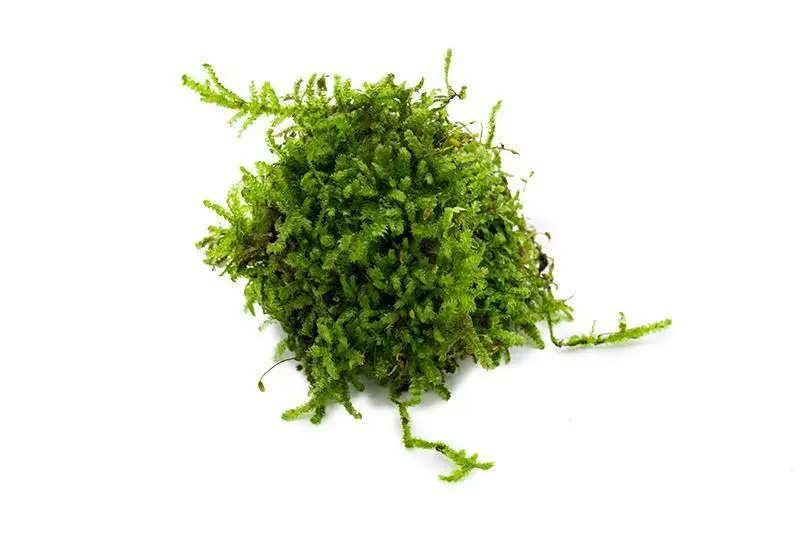
- pH: 5.5-8.0.
- Temperature: 20-26°C (68-79°F).
- Lighting: Moderate to high light.
- Difficulty of Care: Moderate.
Christmas Moss (Vesicularia montagnei) is all in all an excellent choice for planted aquariums. It gets its name from the unique shape of its branches, which resemble tiny Christmas trees. This moss species has a slower growth rate compared to Java Moss, making it easier to maintain and trim, however it does have a more demanding lighting requirement. Christmas Moss can be attached to rocks or driftwood, and its delicate and intricate appearance adds a touch of elegance to any aquarium.
Flame Moss
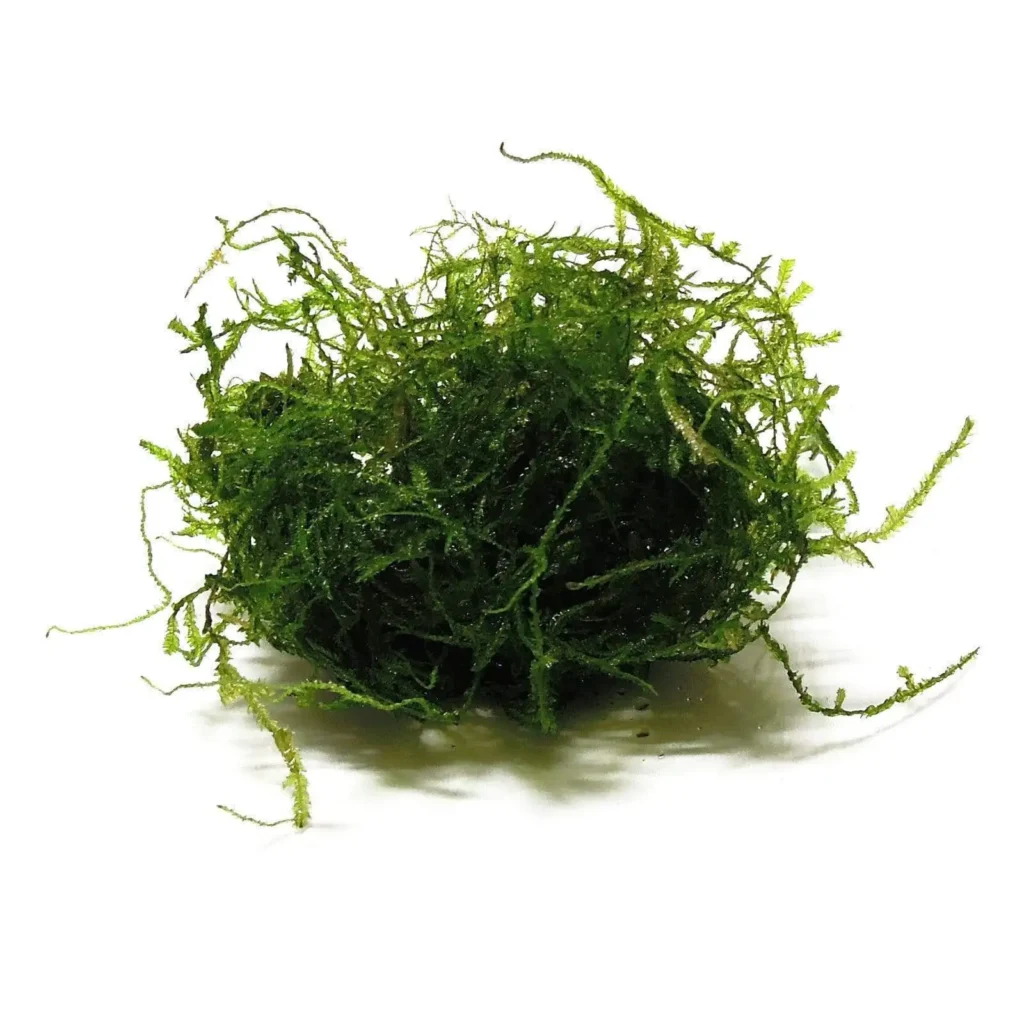
- pH: 5.5-8.0.
- Temperature: 22-28°C (72-82°F).
- Lighting: Moderate to high light.
- Difficulty of Care: Moderate.
Flame Moss (Taxiphyllum sp ‘Flame’) is a vibrant and eye-catching aquatic moss species. It is named for its flame-like growth pattern, with branches that curve upward, resembling flickering flames. Flame Moss is a relatively fast-growing moss that requires regular trimming and moderate to high lighting to maintain its shape.
Weeping Moss
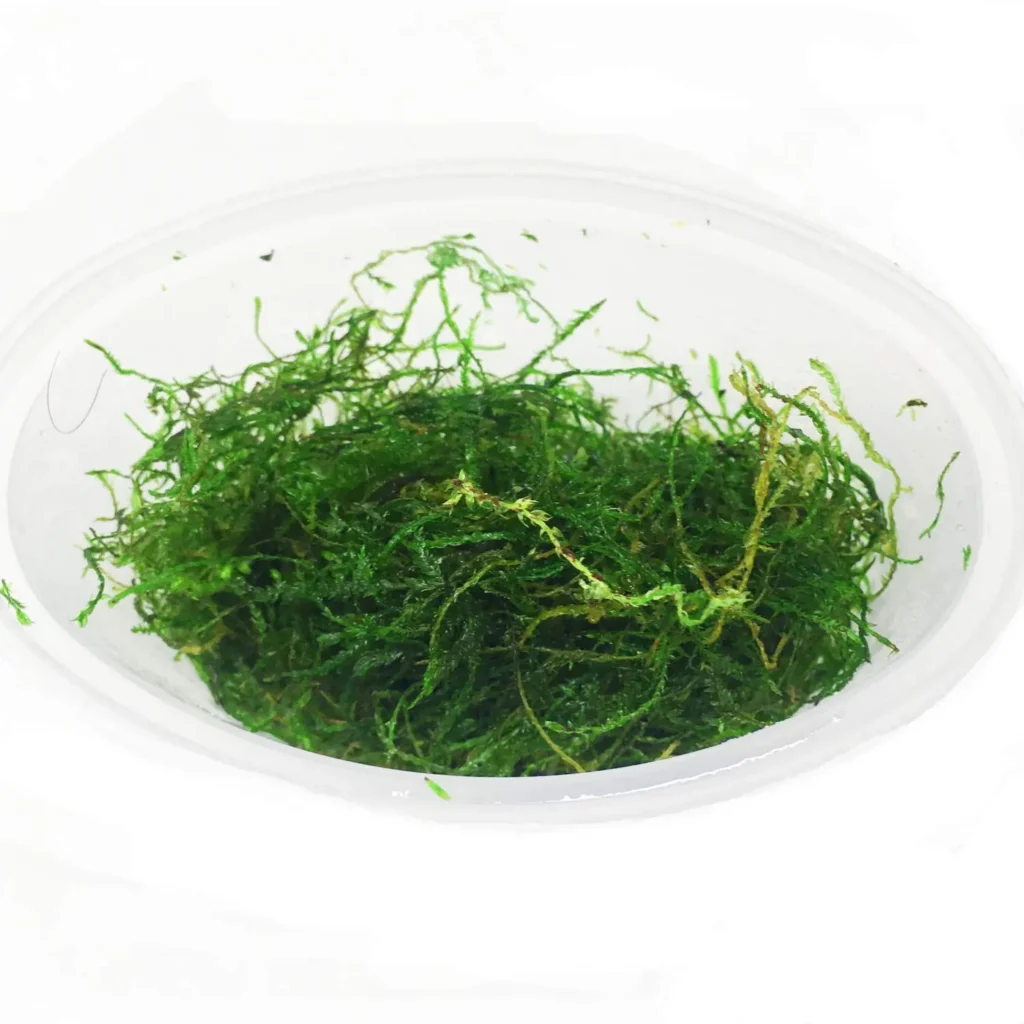
- pH: 5.5-8.0.
- Temperature: 20-28°C (68-82°F).
- Lighting: Moderate to high light.
- Difficulty of Care: Moderate.
Weeping Moss (Vesicularia ferriei) is a delicate and graceful moss species that adds a touch of elegance to aquariums. It has long, slender branches that hang down, resembling the flowing branches of a weeping willow tree.
Weeping Moss is best attached to rocks or driftwood, where it can create a cascading effect. It has a moderate growth rate and requires occasional trimming to prevent it from overshadowing other plants in the aquarium.
Taiwan Moss

- pH: 5.0-8.0.
- Temperature: 20-28°C (68-82°F).
- Lighting: Low to moderate light.
- Difficulty of Care: Easy.
Taiwan Moss (Taxiphyllum alternans) is a versatile and visually appealing aquatic moss species. It has a feathery appearance with dense branching, creating a lush and natural look in the aquarium. Taiwan Moss can be attached to rocks, driftwood, or other surfaces, and it can also be left floating in the water. It is a slow-growing moss that requires minimal maintenance, making it suitable for both beginners and experienced aquarists.
Choosing an Aquatic Moss for your Aquarium
When choosing aquatic moss for your planted aquarium, it is important to consider the specific needs of your fish and other aquatic inhabitants. Some moss species may provide better hiding places or food sources for certain fish or invertebrates. Take into account the overall aesthetic and design of your aquarium when selecting your preferred aquatic moss.
Remember to regularly trim and maintain your aquatic moss to prevent it from overgrowing and overshadowing other plants in the aquarium. With proper care and attention, aquatic moss can enhance the beauty and health of your planted aquarium, creating a serene and natural environment for your aquatic pets.
Where to Purchase Aquatic Moss
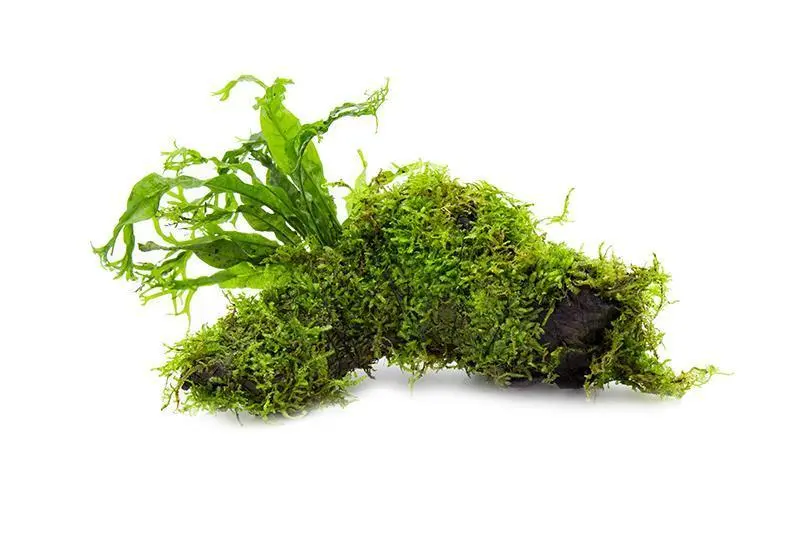
There are a number of methods that you can utilize when seeking to purchase aquatic moss. The first and likely most common would be to purchase from your local fish store. This is usually a great option, however you may be limited in the varieties of moss available. In my experience, you’re most likely to find Java Moss or Christmas Moss in local fish stores.
Another option, particularly if you are looking for a less common variety, would be to buy your aquatic moss off of an online aquatic plant retailer. I have personally enjoyed ordering plants from buceplant.com and aquariumcoop.com in the past. In general, these retailers sell a large volume of online plants and typically have very healthy plants. The drawback with this method is the cost associated with shipping, which can get somewhat pricy as aquatic plants require express shipping to ensure their healthy transport.
Finally, you can look to local online aquarium groups to see what aquarists in your area have for sale. This is often the most affordable option and can be a great way to purchase plants as well.

